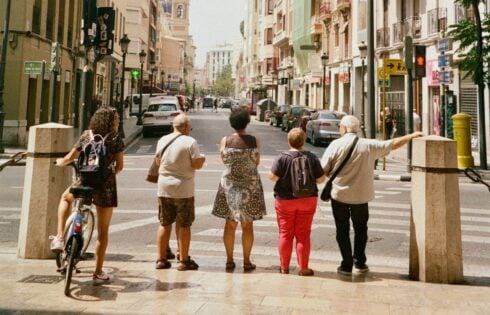We all have heard of Carmen, the sexy heroine of the opera set in Sevilla. But what’s her connection with nicotine? Michael Coy informs us.
IT’S no-brainer, as Americans say. If you’re a merchant sending a sailing ship to the New World 300 years ago, you want it to bring back something small, light and easy to sell. Tobacco was perfect.
A ship could be packed with thousands of leaves from this simple plant and, as we know, the people who bought and smoked it became addicted and came back for more. Importing tobacco was the ideal commercial arrangement.
Sevilla quickly became the world capital of the nicotine trade. When the Spanish king saw the profits to be made, he took notice. A royal monopoly soon passed into law, making all the tobacco in the land the sole property of the monarch.
But life has a way of attaching problems to every benefit. Pilfering was rife in Sevilla, and something had to be done to protect the royal income. Hence the Real Fabrica de Tabacos – the Royal Tobacco Factory.

It’s a remarkable building. Today the cigars have gone, and it houses Sevilla University. You can walk inside, and the overwhelming impression is of fortress-like power. Well into the 20th century, it was the largest man-made structure on earth. There are very few windows – burglars need windows – and you can still find signs over doorways saying things like ‘Cigar Inspectors’ Office’.
So where does Carmen fit in?
Meet Prosper Merimee.
In 1830, Merimee was one of France’s best-known novelists. He often came to Andalucia on holiday. Though he spent time in Teba – he had aristocratic friends there who would later marry into the French royal family – he found Sevilla fascinating.

One summer afternoon in a bar, the Spanish men suddenly headed for the door. “Where are you going?” asked Merimee. They told him to come along – it was time for the changing of shifts at the Tobacco Factory.
Today, just as in 1830, Sevilla is proverbial in Andalucia for its heat. Lying in the Guadalquivir valley, it gets no cooling breezes, and temperatures of 450 are common in July and August.
Inside the Factory, with its lack of windows, the heat was unbearable. Only the most desperate workers would tolerate the conditions. And that meant the gypsy girls of Triana, the impoverished district just across the river. Famous for their beauty, they wore as little as decency allowed – hardly surprising when they had to bake all day in that oven of a workplace.
The men came to watch one shift of gitanas clocking off, and the next lot arriving. There was no Page 3 tabloid nudity in those days.
On this particular day, two gypsy girls began fighting right under the main gate of the factory. A knife appeared.
In London in 1830, the newly formed Bow Street Runners were on hand to deal with incidents like this. Today we call them police. In Sevilla at the time, there was no such agency. Only the army could intervene. The squaddies were summoned and broke up the fight.
Merimee was deeply impressed.
The gypsy girls were fiery, beautiful and scantily clad. He began writing a novel. The heroine needed a typical Andalucian name, so he called her Carmen. In the story, she is wild, independent, proud – and she rejects any man who tries to woo her.
After the novel became a sensation – it topped the French best-sellers list for 30 years – a struggling composer named Georges Bizet turned the tale into an opera.

Carmen is now one of the world’s best-loved works of musical theatre. Yet, when it premiered in Paris in 1875, audiences despised it. They thought it a sordid story about a promiscuous gypsy, hardly a noble work of art. The stress of the scandal was so intense that Bizet died within three months of its debut.
Next time you’re in downtown Sevilla, visit the Real Fabrica de Tabacos and ponder the French connection that gave the world one of its most enduring legends.
Click here to read more Spain News from The Olive Press.








